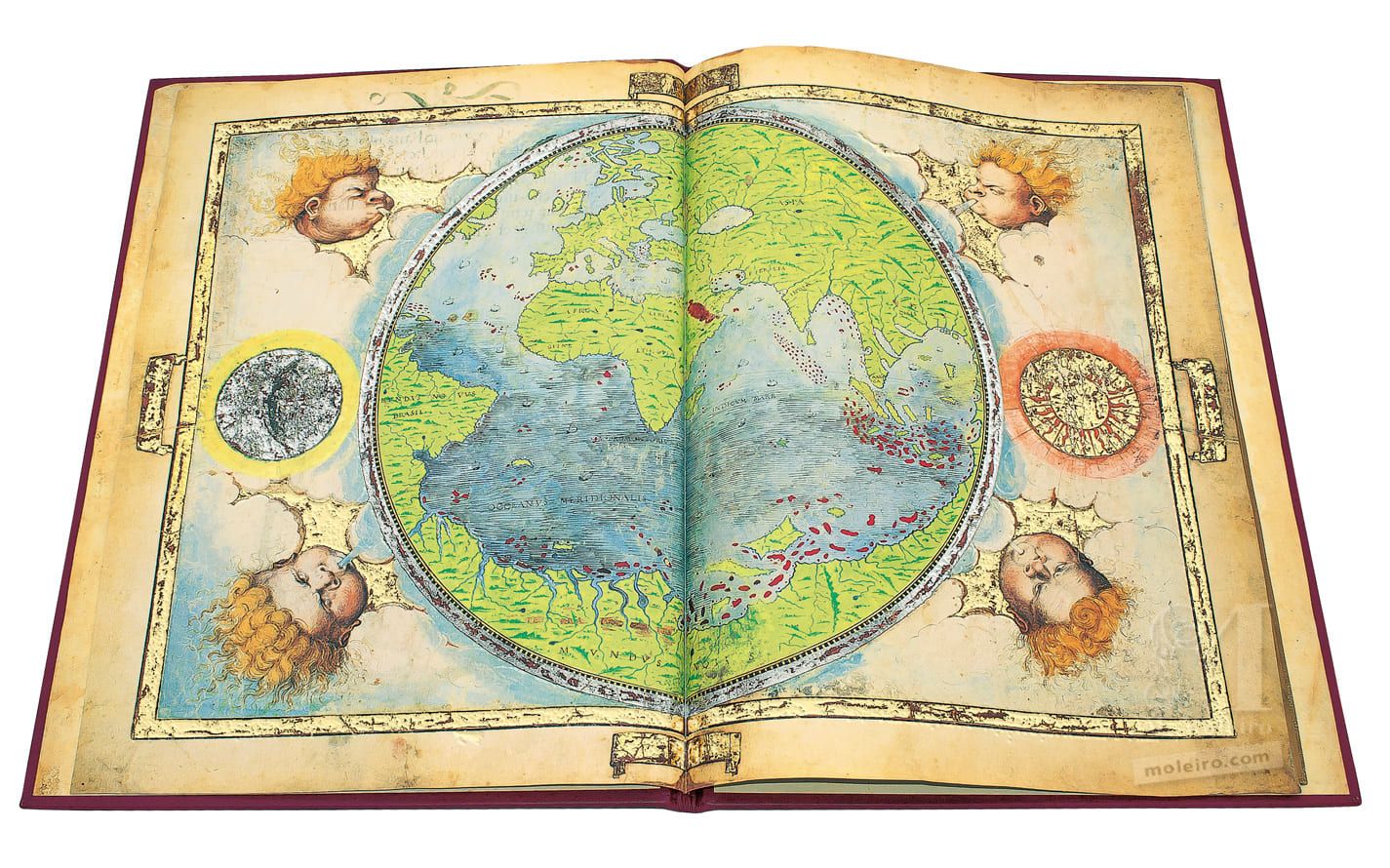Planisphere
The centre of the parchment sheet is occupied by the circular Atlas Miller mappamundi, as decorative as it is crude and measuring 330 mm in diameter. It was drawn and coloured (green for that land and blue for the seas) inside a rectangular frame whose four corners hold an equal number of fascinating wind-heads that seem to be blowing from the “Four Corners of the Earth”. The same frame also holds the sun and the moon, one on each side.
The right side of the back, which would be the first page of the original codex when folded, has a caption with the date and signature surrounded by another rectangular frame. The inscription reads: “Hec est vniuersi orbis ad hanc usqe diem cogniti tabula Quam ego Lupus homo Cosmographus in clarissima Ulisipone ciuitate Anno domini nostri Millessimo quingentessimo decimo nono Jussu Emanuelis incliti lusitanie Regis collatis pluribus alijs tam vetustorum quam recentiorum tabulis magna industria et dilligenti labore depinxi.” (This is the map of all the globe of the universe now known, which I, Lopo Homem, cosmographer, having compared many other maps both ancient and modern, drew with great effort and diligent work in the illustrious city of Lisbon, in the year of Our Lord fifteen hundred and nineteen, by order of Manuel, eminent King of Portugal).
The initial impression when looking at the mappamundi is that it is crudely misshapen, as if shifts the Old World continents of Europe, Asia and Africa to the north, and shows the vast southern area occupied by a vast sea where the Atlantic and the Indian Ocean meet and mingle. This is then surrounded by a huge and fantastical southern land-mass that stretches from west to east, linking the New World that the Portuguese and Castilians had recently discovered (1492-1500) to the lands of Asia and the Southeast Asian islands that the Portuguese had reached and were settling (1497-1519). For those who know their history of ancient geography, this enormous southern land-mass immediately suggests that the mappamundi was possibly influenced by the concepts expressed by Macrobius (4th-5th centuries) and Pomponius Mela (1st century) and their “antipodes”. Even so, there can be no doubt that although this element is theoretical and based on writers from Antiquity, it can only be classified as highly unusual and strange when included in a map from this time.
The second sensation felt when looking at the mappamundi is that within the general geographical concepts, it is strange that the seas are all surrounded, enveloped even, by the continents. This transforms them collectively into a sort of enormous lake with several branches that are all encircled by land. Thus, the land surrounds the seas rather than the other way round. It is hard to understand why this strange vision was used or reused at this time.
Alfredo Pinheiro Marques
Centro do Estudos do Mar Luís de Albuquerque
(Fragment of the Atlas MIller commentary volume)
